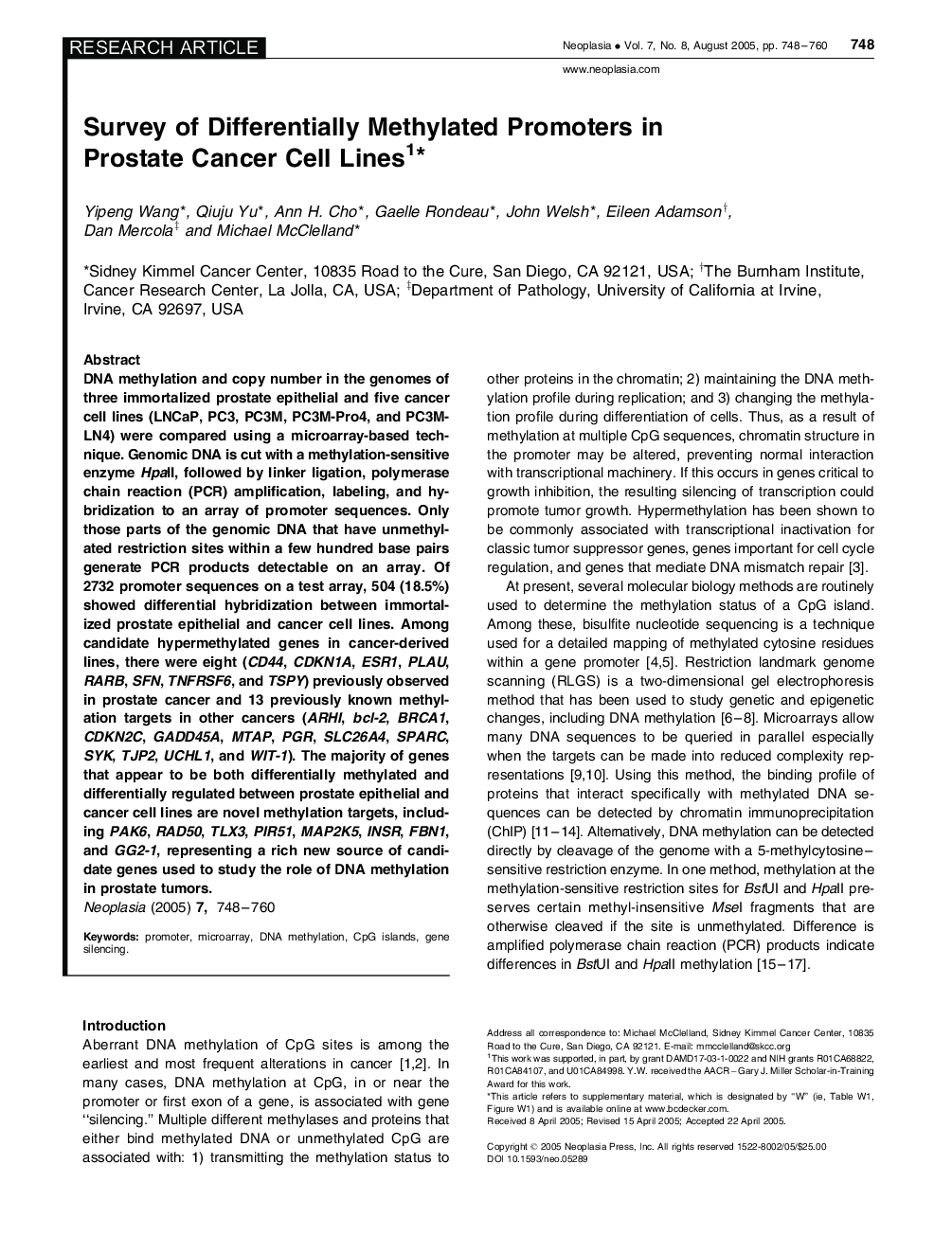| Article ID | Journal | Published Year | Pages | File Type |
|---|---|---|---|---|
| 10915672 | Neoplasia | 2005 | 20 Pages |
Abstract
DNA methylation, copy number in the genomes of three immortalized prostate epithelial, five cancer cell lines (LNCaP, PC3, PC3M, PC3M-Pro4, PC3MLN4) were compared using a microarray-based technique. Genomic DNA is cut with a methylation-sensitive enzyme Hpall, followed by linker ligation, polymerase chain reaction (PCR) amplification, labeling, hybridization to an array of promoter sequences. Only those parts of the genomic DNA that have unmethylated restriction sites within a few hundred base pairs generate PCR products detectable on an array. Of 2732 promoter sequences on a test array, 504 (18.5%) showed differential hybridization between immortalized prostate epithelial, cancer cell lines. Among candidate hypermethylated genes in cancer-derived lines, there were eight (CD44, CDKN1A, ESR1, PLAU, RARB, SFN, TNFRSF6, TSPY) previously observed in prostate cancer, 13 previously known methylation targets in other cancers (ARHI, bcl-2, BRCA1, CDKN2C, GADD45A, MTAP, PGR, SLC26A4, SPARC, SYK, TJP2, UCHL1, WIT-1). The majority of genes that appear to be both differentially methylated, differentially regulated between prostate epithelial, cancer cell lines are novel methylation targets, including PAK6, RAD50, TLX3, PIR51, MAP2K5, INSR, FBN1, GG2-1, representing a rich new source of candidate genes used to study the role of DNA methylation in prostate tumors.
Related Topics
Life Sciences
Biochemistry, Genetics and Molecular Biology
Cancer Research
Authors
Yipeng Wang, Qiuju Yu, Ann H. Cho, Gaelle Rondeau, John Welsh, Eileen Adamson, Dan Mercola, Michael McClelland,
